Ed Bolen
President and CEO of the National Business Aviation Association (NBAA)
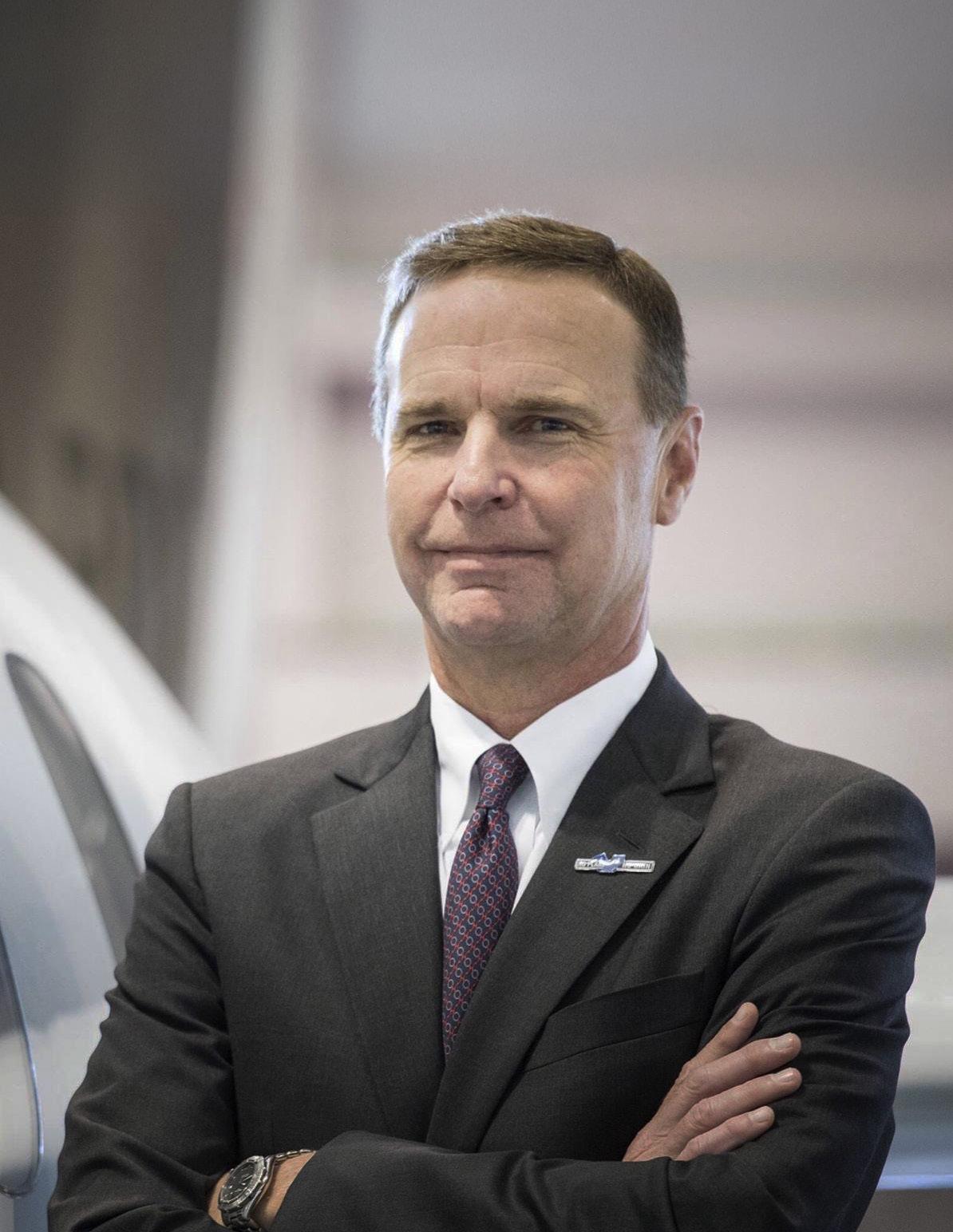
Ed Bolen Speaks on NBAALeadership and the Military Connect Initiative


Ed Bolen
President and CEO of the National Business Aviation Association (NBAA)

Ed Bolen Speaks on NBAALeadership and the Military Connect Initiative

Dear Readers,
As we embark on another issue of veterans transition advocate, magazine, I want to take a moment to reflect on the invaluable work that continues to shape the lives of veterans transitioning into civilian life. At VTAM ,we are proud to be a part of this journey—one that is filled with both challenges and triumphs.
This publication is more than just a magazine; it is a voice for those who have served our country and now seek to find new purpose, new opportunities, and new communities. Whether it’s navigating the complexities of education benefits, building a second career, or finding the right mental health resources, our goal is to provide the tools, stories, and support that can make a difference.
Each article, interview, and resource is crafted with care.
Our writers, contributors, and experts all share a singular mission: to empower our veterans by providing insights, encouragement, and a sense of connection.
In this issue, we spotlight inspiring stories of veterans who have successfully transitioned.
If you have any thoughts, feedback, or stories you’d like to share, please don’t hesitate to reach out. This is your magazine, and together, we will continue to build a brighter future for those who have given so much.
With gratitude and respect,
David Schiavone
Publisher, Veterans Transition Advocate Magazine . VTAM
Co-Publishers Eli Stepp (702/465-2027) and Annamarie Buonocore (650/504-8549)
Managing Editor Vickie Buonocore
Associate Editor Jerry Whetstone
Production Editor Matt DuBois
Advisory Board Member Nick Trotta
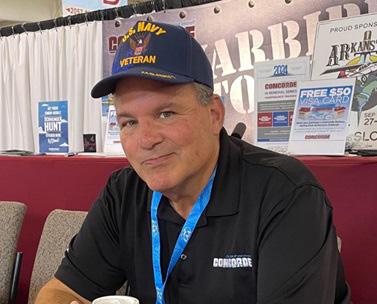
When it comes to aviation expertise paired with heartfelt service to veterans, few individuals embody both like Dave Schiavone. With over four decades in the industry, Dave has built a reputation rooted in technical excellence, mentorship, and unwavering commitment to those who have served.
From his early days in the US Navy and the Air Force National Guard (spanning an impressive 22 years) Dave developed not only a deep understanding of aircraft systems, but also a strong sense of duty. That sense of service didn’t end at the completion of his military career. It evolved into passionate advocacy for veterans, navigating the transition into civilian aviation careers guiding them through benefits programs and mentoring newcomers to the industry.
Throughout the 1980s and into the new millennium, Dave’s journey brought him to key roles at Aero Quality Sales and Aviall Services, where he managed battery operations and distribution. He later provided technical support at Saft America Inc., further solidifying his reputation as a battery systems expert. These chapters ultimately led him to Concorde Battery Corporation, where he’s been supporting customers and leading technical initiatives since 2016.
His commitment to education and safety is equally impressive. As a public speaker and trainer, Dave has addressed maintenance teams around the globe, sharing critical knowledge on aircraft battery maintenance. As a lead FAAST representative and a board member
Continued on Page 19

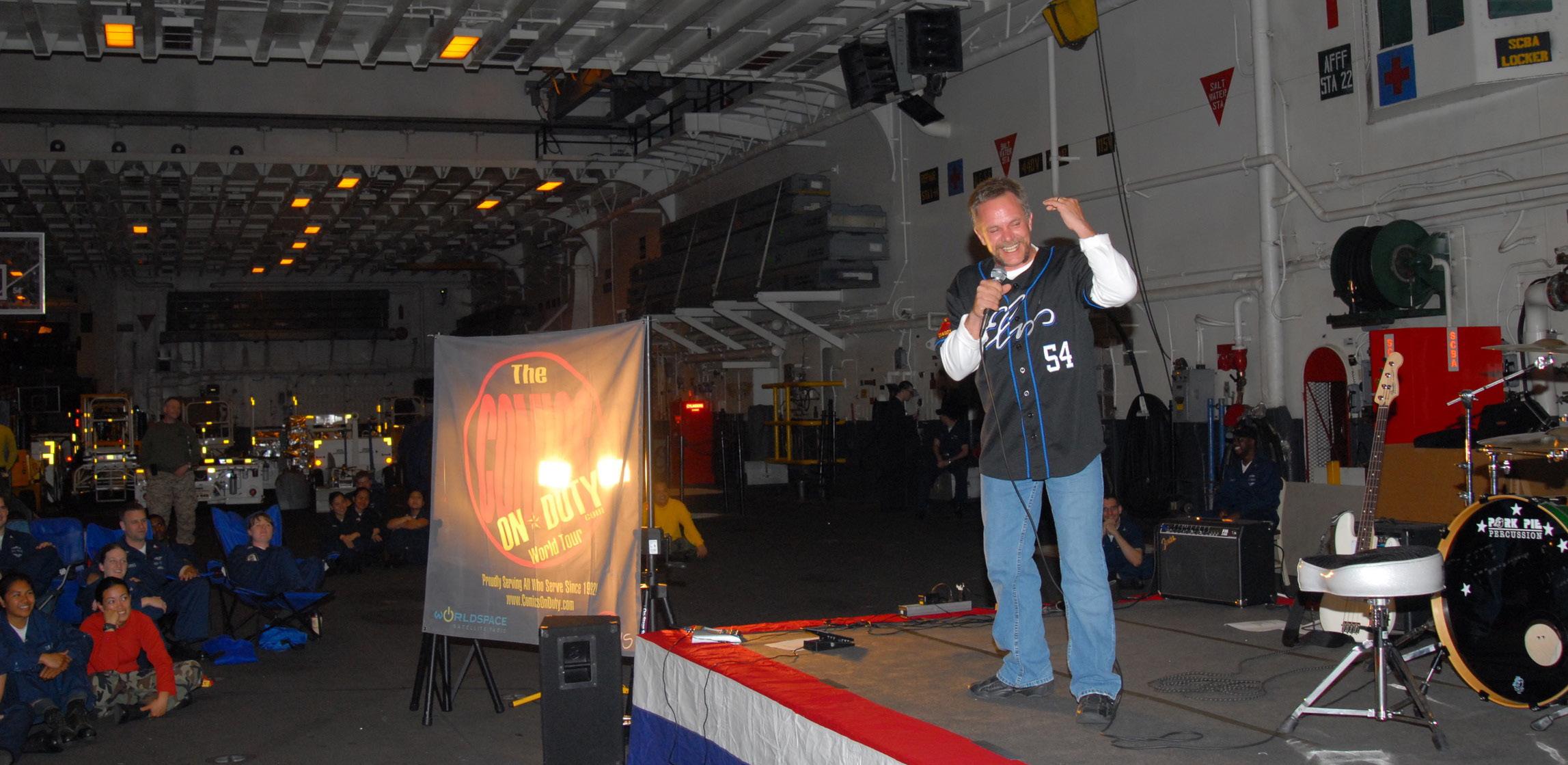
Interview by Eli Stepp and Jerry Whetstone, Veteran Transition Advocate Magazine
When comedians step on stage, their humor often seems effortless. Watching Tom Foss perform aboard a Carnival cruise ship, the ease of his delivery, combined with his relatable observations, made his act seem simple. But as Veteran Transition Advocate Magazine discovered in an exclusive interview, Foss’s journey in comedy has been anything but ordinary. Beyond cruise ships and clubs, Foss’s comedic career has taken him to military bases worldwide, entertaining troops in war zones and lifting spirits wherever he goes.
Foss’s comedy career launched unexpectedly in 1986 when, at age 27, he entered an open-mic comedy contest. “I won,” Foss recalled with a grin, “and the prize was $50—three days’ worth of wages compared to my job at Pepsi at the time. That was enough to keep me coming back.” What started as a whim quickly turned into a thriving career, leading Foss to write jokes for Jay Leno, perform on Broadway, appear regularly on satellite radio, and even record multiple specials for Dry Bar
Comedy.
But Foss’s career highlights aren’t limited to civilian entertainment. His comedic talents have been particularly impactful for U.S. military personnel, with Foss performing over 500 military shows worldwide, including five tours in Iraq and six in Afghanistan. His experiences have also included memorable and adrenaline-packed shows aboard six U.S. aircraft carriers, such as the USS Enterprise and USS Ronald Reagan, where he landed via tailhook and catapulted off flight decks.
These experiences are not only career milestones but deeply meaningful personal endeavors for Foss. When asked about the feedback he’s received from troops, he shared, “The greatest compliment I get is when soldiers say, ‘For an hour, you made me forget where I was.’ Knowing that I could offer a brief escape from the realities they face is profoundly rewarding.”
Interview by Eli Stepp, Veteran Transition Advocate Magazine Co-Founder
We recently had the chance to catch up with Ed Bolen, President and CEO of the National Business Aviation Association (NBAA). For more than 20 years, Bolen has been a steady voice for business aviation in Washington and around the world. In our conversation, he talked openly about where the industry stands today, the challenges and opportunities that lie ahead, and why NBAA’s new Military Connect program is such an important step in helping veterans find their place in business aviation.
VTAM
Mr. Bolen, how would you describe the current state of business aviation in the U.S. and globally?
EB
Our industry has largely recovered from the effects of COVID, with most regions having returned to pre-pandemic levels and a slight uptick in business aviation traffic in North America. At a higher level, we’ve also seen global competitiveness accelerate, with companies and entrepreneurs turning to business aircraft to match this increasing cadence and become ever nimbler in pursuing new opportunities.
The primary drivers affecting our industry remain relatively constant even as economic and political conditions may vary. Business aviation optimizes efficiency, ensures key employees are able to deliver products and services and provides critical transportation alternatives to communities with little or no airline service.
What are some of the most significant trends or innovations shaping the future of business aviation?
EB
Across the board, business aviation has become ever more accessible to entrepreneurs and companies. That includes the emergence of an increasing number of charter, fractional ownership, and jet card alternatives to traditional, sole ownership of business aircraft. We expect to see even more innovative business aviation use
cases, including promising utilization models for the next generation of sustainable aviation technologies and advanced air mobility (AAM) vehicles.
These innovative aircraft will be powered by equally advanced propulsion methods, ranging from sustainable aviation fuel, or SAF – a true game-changer in reduced emissions from today’s turbine business aircraft – to entirely new fuels and into electric, hybrid and even hydrogen propulsion. We’re also seeing new designs, from blended-wing technologies to viable, and quiet, supersonic aircraft, as well as increasing use of unmanned aerial systems (UAS) in business aviation. This truly is a very exciting time to be a part of our industry.
How does NBAA advocate for the industry in Washington and internationally in today’s regulatory environment?
Our industry is an essential, diverse and complex one, which requires a forceful and effective champion for policies that foster the industry’s growth in the U.S and around the world. NBAA was founded more than 75 years ago to serve as a forceful and effective champion for policies that foster business aviation’s growth in the U.S., across North America and around the globe.
In the U.S., NBAA personnel are constantly engaged with our elected representatives on Capitol Hill and the regulatory agencies. We are often invited to provide testimony in Congress on matters affecting the industry, from regulation and workforce to operational safety and taxation. Our team of Regional Directors works with local and state leaders, as well as regional business aviation groups, to foster greater understanding of the industry’s many benefits. In the global arena, NBAA coordinates with our international partners on multiple shared priorities, including through the International Business Aviation Council (IBAC).
Continued from Page 6
What role do sustainability initiatives play in NBAA’s strategic vision?
EB
As I mentioned earlier, NBAA is at its core an advocacy organization, and that includes promoting advanced technologies to usher in a new era of safety and sustainability. Perhaps our most prominent example of a programmatic effort in that regard is CLIMBING. FAST., an industry advocacy initiative launched two years ago to not only showcase business aviation’s many societal benefits, but to also how our industry is leading sustainability innovation with a goal of achieving net-zero carbon emissions by 2050.
This commitment also extends to the Federal Aviation Administration’s (FAA’s) release last year of its Special Federal Aviation Regulation (SFAR) to establish requirements for the safe, efficient integration of AAM aircraft into the nation’s aviation system. Notably, the SFAR was signed at the opening day of the 2024 NBAA Business Aviation Convention & Exhibition (NBAA-BACE), highlighting our association’s role in making AAM flights a reality.
In another example of our industry’s impact, the U.S. House of Representatives Appropriations Committee recently advanced critical language, strongly supported by NBAA, in two key Fiscal Year 2026 appropriations bills recognizing the importance of sustainable aviation fuel (SAF) and the role it plays in decarbonizing aviation. That builds on the SAF blender’s tax credit, introduced through the Inflation Reduction Act of 2022, which incentivizes expanded SAF production and availability.
VTAM
How is NBAA engaging younger generations and emerging professionals in aviation?
EB
NBAA is addressing workforce challenges in several ways, including through our Collegiate Connect program at NBAA-BACE, to build early awareness among young people about aviation careers. Our YoPro (for “young professionals”) Council helps nurture emerging talent already working in business aviation, while the NBAA Mentorship Network helps build connections between established industry professionals and those building their careers in the industry.
Additionally, NBAA has partnered with the Alpha Eta Rho aviation fraternity organization to collaborate on initiatives to support and advance business aviation. That includes advising college students of career opportunities in the industry, and ensuring they have a voice in Washington, DC in shaping their roles in business aviation’s future.
Can you share the inspiration and objectives behind NBAA’s new “Military Connect” program?
NBAA Military Connect was designed by staff members who previously served our nation’s armed forces, along with NBAA members who served in the military before enjoying successful careers in the aviation industry. These volunteers, in turn, had several insightful conversations with other veterans about how we could better engage with those exiting military service today.
Taking place Oct. 15 at NBAA-BACE in Las Vegas, NV, the Military Connect program will provide essential knowledge and guidance relevant to navigating the civilian aviation landscape. Attendees will have the opportunity to participate in targeted experiences on the NBAA-BACE exhibit floor, including a military meet-up at the NBAA booth for networking, as well as special engagements at the NBAA Career Zone. The day will conclude with a final session to reinforce key takeaways and provide additional support for a successful transition.
What types of career pathways does Military Connect aim to bridge between military veterans and the business aviation industry?
NBAA takes an expansive view on this, because there really isn’t a single job in our industry for which veterans aren’t well-suited. Military pilots are often eager to transition to flying the latest and most advanced business aircraft, for example; and aircraft maintenance technicians (AMTs) will find their skills equally well-suited to working on piston, turboprop and turbofan aircraft.
That said, personnel with non-technical backgrounds
Continued from Page 7
can also find many career opportunities in business aviation, with companies and organizations that value their strong work ethic, leadership skills and ability to handle challenging situations.
How is NBAA partnering with companies and government agencies to support transitioning service members?
EB
NBAA is collaborating with numerous entities, both within the industry and those in government, oversight and regulatory roles, to help drive inclusion of military veterans in business aviation. These conversations will also be a big part of NBAA Military Connect in opening doors for anyone transitioning from active military service to a career in the business aviation sector.
What kinds of roles in business aviation are best suited for veterans coming out of the military?
Again, there are many skills learned in military service that are directly applicable to business aviation, from piloting and maintaining aircraft to scheduling operations and managing people. The sky really is the limit, as it were.
Are there specific certifications, trainings, or resources that NBAA is helping veterans access?
EB
At this time, our primary focus is to bring military veterans to the table, introduce them to what our industry has to offer and to foster interactions with business aviation companies seeking these highly skilled and qualified workers. Over time, it’s possible this process will result in additional dedicated NBAA initiatives as Military Connect similarly grows and evolves over the next few years.
How can business aviation companies actively participate or benefit from this initiative?
EB
I strongly encourage any company in business aviation seeking to grow their ranks to participate in Military Connect and meet these veterans who represent a di-
verse, professional, highly skilled and mission-dedicated workforce.
Why do you believe veterans are a great fit for the business aviation industry?
There is a long history of military aviators and other personnel bringing their leadership to civil aviation. Not only do they bring their skills to the industry, as previously noted; they also provide valuable direction, commitment and discipline to their companies. We’re excited to deepen these roots with NBAA Military Connect, to equip these patriots and military professionals with the knowledge, connections, and confidence necessary to embark on fulfilling careers in civilian aviation.
What advice would you give to a service member preparing to separate from the military and looking into aviation careers?
We encourage anyone seeking a career in our industry to utilize social media like LinkedIn to build a network of industry contacts who can help with their job search. They should also track job boards at jobs.nbaa.org, charter companies, MROs and aircraft manufacturers.
They can also get involved with their local and regional business aviation groups, and attend industry events like NBAA-BACE. For maintenance professionals specifically, we also recommend earning their FAA A&P certificate before separating from the military.
And, of course, check out NBAA Military Connect! This isn’t a matter of a lack of possible career paths in business aviation for veterans, but rather one of awareness. We look forward to introducing them to our industry and its many possibilities for those exiting the armed forces.
How is NBAA helping to address the growing workforce shortages in aviation maintenance, operations and pilot roles?
In addition to NBAA Military Connect and the other programs I’ve mentioned, NBAA’s member publication Business Aviation Insider recently highlighted a visit by three veterans now working in business aviation with airmen of the 121MXG at Rickenbacker Air National Guard Base in Columbus, OH to discuss the current
Continued from Page 8
market for aviation maintenance technicians (AMTs) and to offer guidance in finding their places in our industry. The good news for them is we are not lacking for potential opportunities.
What success stories have you seen so far from veterans transitioning into business aviation?
EB
I would look to the significant number of former military personnel already working in our industry today, including at NBAA. One of our board members is a four-star general, for example, while others are leading the association’s environmental and technical operations and our safety, security, sustainability and international advocacy efforts. Programs like NBAA Military Connect now help us reach out to the next generation of leaders and professionals.
VTAM
You’ve led NBAA since 2004. What has been your proudest moment or achievement during your tenure?
EB
The important thing is to focus on all we’ve realized throughout our industry, the many people whose work has led to the sector’s successes, and the potential of what we have yet to achieve throughout this unique and impactful community.
Business aviation is really about the people who bring both their passion and profession forward, every single day, to strengthen our industry. It truly illuminates the power and potential that can be achieved when bringing this unique skillset to bear.
What keeps you passionate about serving the business aviation community?
EB
It really is about our industry’s proud and storied legacy, and how that drives all our potential for the future. We all stand on the shoulders of giants who laid the groundwork for business aviation decades ago, and set
the groundwork for successes we can achieve today and tomorrow. Across all domains, I believe we continue to see astonishing leaps forward, realized through continued investment in the future.
How do you define success for NBAA, and for yourself as its leader, in the coming decade?
EB
NBAA’s mission will remain as it always has been, to foster the growth of business aviation in the United States and around the world by championing legislative and regulatory policies that grow the industry; hosting world-class aviation events, NBAA-BACE; supporting our members in their day-to-day utilization of business aircraft; and promoting initiatives to grow our next generation workforce.
I am confident our industry has a bright and sustainable future ahead, and NBAA will continue our efforts to ensure business aviation grows stronger five, 10 and 50 years down the line.
If you could deliver one message to veterans about opportunities in business aviation, what would it be?
EB
This is truly an industry with boundless opportunities for those who’ve served in the military and who believe in being part of something larger than themselves.
How can readers of Veteran Transition Advocate Magazine get involved with or learn more about NBAA and Military Connect?
EB
Go to the Military Connect resource on our website for NBAA-BACE, at https://nbaa.org/ events/2025-nbaa-business-aviation-convention-exhibition-nbaa-bace/military-connect-2025-nbaa-bace/. I also encourage them to reach out to individual NBAA staffers who’ve previously served in our armed forces, by calling our organization at (202) 783-9000.
Veteran Transition Advocate Magazine sincerely thanks Mr. Bolen for taking the time to share his insight with us.

U.S. Army Captain Gerrayl Bryson
Interview By Eli Stepp, Veteran Transition Advocate Magazine
When former Army Captain Gerrayl Bryson reflects on his journey from a sports loving teenager in New Jersey to a decorated officer and now a civilian leader in Las Vegas, one word rises above all others: purpose. His story is one of grit, growth, and an unshakable commitment to serve whether that’s on the battlefield, in the logistics trenches, or supporting fellow veterans as a civilian. Bryson’s transition out of the military wasn’t seamless, but it was intentional and filled with lessons every service member should hear.
Growing up in Lawrenceville, New Jersey, Bryson was an athlete first football and wrestling were his passions. But when it came to college, he admits, “I wasn’t mature enough. I didn’t have the structure.” That clarity led him straight to a military recruiter after being inspired by the movie Black Hawk Down. At 17, he enlisted as
a parachute rigger, shipping out to basic training at Fort Jackson, South Carolina.
“My GT score wasn’t high enough for what I wanted,” he recalls, “but they said, ‘You can support Rangers and jump out of planes,’ and I said, ‘I’ll take it.’”
After a couple of years supporting Fifth Special Forces Group at Fort Campbell, Bryson charted a new path through the Army’s Green to Gold program, which allows enlisted soldiers to earn commissions as officers. Using his GI Bill and sheer determination, he completed an associate’s degree entirely online, often from the barracks or even on the flight line and then earned his bachelor’s while enrolled in ROTC at Slippery Rock University.
“I remember typing papers on a computer the size of a notebook while my friends went out partying,” he says with a laugh. “I had fun too, but I knew I needed to
Continued from Page 6

challenge myself.”
He commissioned as an Infantry Officer in 2014 and began his training at Fort Benning, Georgia—ready to finally take on the combat leadership role he had always wanted.
But just as he prepared for Ranger School, a small knot on his lower back changed everything. The lump was cancerous, and the required surgery left a scar right where his rucksack would rest.
“That was it. Infantry was no longer an option,” he says. “It was disappointing, but I realized how fortunate I was to still be able to serve.” Bryson chose to branch transfer to Quartermaster, returning to his roots at Fort Lee and pivoted to logistics.
His new mission: supporting the warfighter by managing the lifeline of military operations supplies, fuel, ammo, and equipment. “I became the Army’s Amazon,” he jokes.
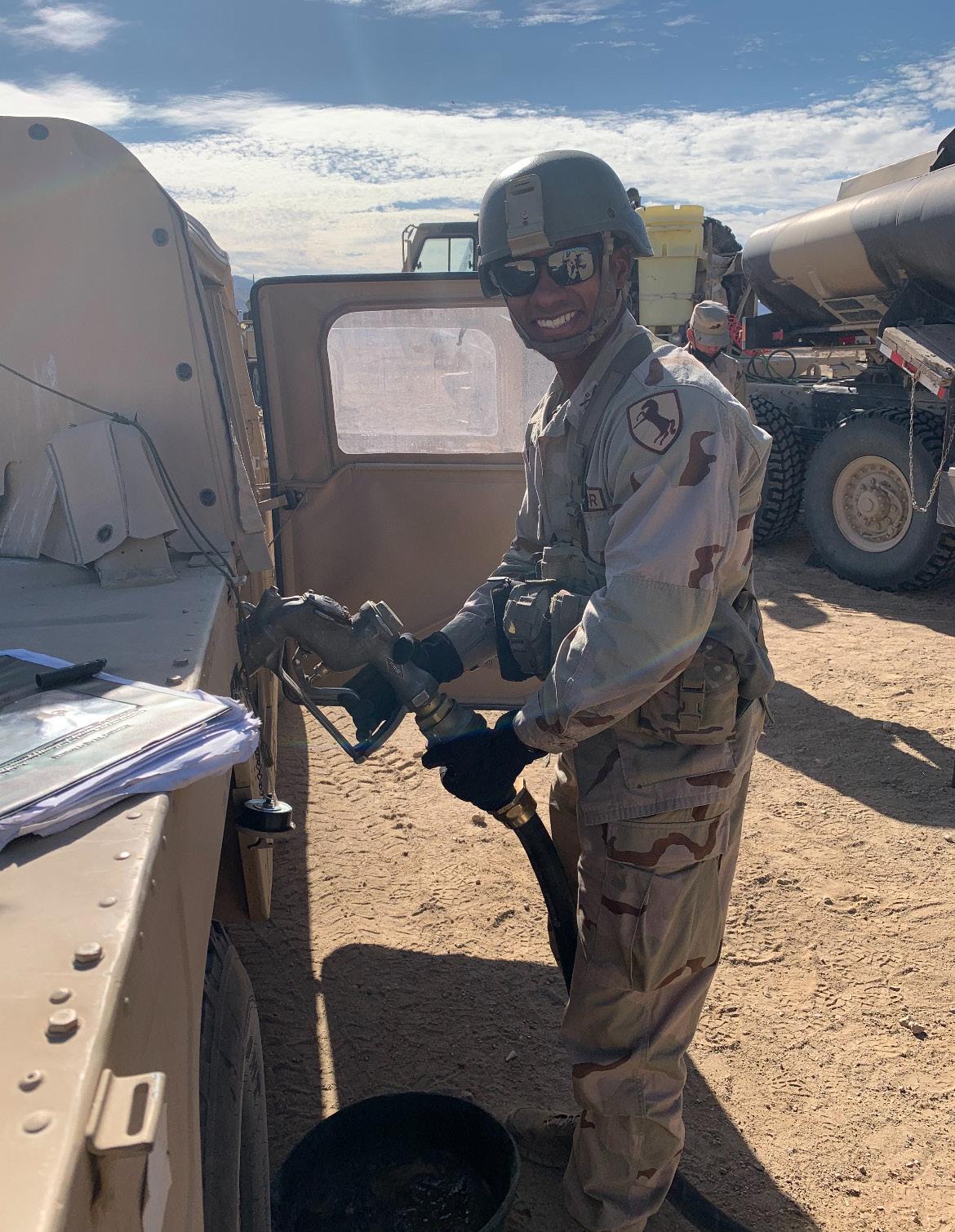
From Fort Bragg to South Korea, Bryson took on roles as platoon leader, executive officer, and battalion logistics officer for an Apache helicopter unit. He led with humility and precision, later attending the Logistics Captain’s Career Course and eventually taking command of a 140-soldier maintenance company at Fort Irwin.
“It was the most diverse team of maintainers everything from night vision repair to refrigeration mechanics,” he says. “It’s also what qualified me for the facility management role I’m in today.”
Civilian Transition Advice From Experience: Planning and Purpose
Bryson’s civilian transition began before he ever left active duty. Using his terminal leave, he started working as a contractor with Amentum in Las Vegas thanks in part to professional certifications like Safety Trained Supervisor and Project Management Professional (PMP).
He encourages every transitioning service member to plan early:

by John Dekhane
During World War II, the skies over Europe were a brutal battleground where death and devastation were constant companions. Day after day, countless Allied airmen climbed into their bombers, fully aware they might never return from their missions. In total, more than 26,000 members of the U.S. 8th Air Force were killed in combat, and over 47,000 were wounded. The average life expectancy of a bomber crew rarely exceeded 15 missions.
On 3 January 1943, all signs pointed to Staff Sergeant Alan Eugene Magee’s name joining the long casualty lists drawn up after each mission over Nazi-occupied territory. But what happened instead defied all logic and reason. This extraordinary tale became one of the most remarkable stories to emerge from the chaos of World War II.
On that fateful day, Magee—a 24-year-old ball turret gunner from Plainfield, New Jersey—was aboard a B-17 Flying Fortress nicknamed “Snap! Crackle! Pop!” During a daylight bombing run over the German-occu-
pied port city of Saint-Nazaire, France, his aircraft was hammered by relentless German anti-aircraft fire. The ball turret, where Magee was stationed, had been rendered inoperable, so he rushed to retrieve his parachute. But before he could reach it, another round of enemy fire tore through the plane, and an explosion sent Magee tumbling into the open sky. As the ground fell away, Magee had one thought, a desperate plea that demonstrated the profound sense of fear and uncertainty that filled his mind: “I don’t wish to die because I know nothing of life.”
The 22,000-foot fall was long, terrifying, and unforgiving. Magee plunged through the sky at a harrowing speed, his life flashing before him. Each second stretched endlessly as he descended, powerless to stop the inevitable. But fate had one miraculous twist in store for him. As he fell, Magee smashed through the glass roof of the Saint-Nazaire railroad station, shattering the surface and plunging to the ground. The glass helped to dissipate the
Continued from Page 12
force of his fall, cushioning his impact enough to prevent a fatal crash.
When the Germans arrived at the scene, they couldn’t believe their eyes. The American airman, seemingly sent by some otherworldly force, was still alive. Despite the unimaginable fall, Magee was still breathing, though gravely injured. He suffered 28 shrapnel wounds, a broken nose, fractured bones, a punctured lung, kidney damage, and his right arm was nearly torn off. His injuries were horrific, but the very fact that he survived a 22,000-foot fall was nothing short of a miracle.
The German soldiers who found Magee were stunned and speechless. In a war where life often hung by a thread, they just couldn’t fathom how this young American airman had survived such a fall. The medical care that followed was a reminder that even in humanity’s darkest hours, there was still room for compassion. Magee later expressed gratitude to the German military doctor who treated him, acknowledging the kindness and care he received during his captivity.
After his miraculous survival, Magee was taken as a prisoner of war. Despite his severe injuries, he endured the hardships of being a POW with a remarkable will to live. His injuries were grave, and his recovery was long and painful, but his spirit never broke. Magee’s strength, both physical and mental, allowed him to survive the remainder of the war. He was eventually liberated in May 1945, and upon his return to New Jersey, he was awarded the Purple Heart and the Air Medal for his bravery and meritorious conduct. Following the war, Magee earned his pilot’s license and worked in the airline industry in a variety of roles. He retired in 1979 and moved to northern New Mexico.
While Magee’s survival was a miracle, it was also a tragedy. The other members of his crew—First Lieutenant Arthur I. Adams, Second Lieutenant Michael L. Libonati, Second Lieutenant Gene A. Witterstetter, Technical Sergeant Dennis C. Hart, Technical Sergeant Alfred M. Union, Sergeant Marvin L. Milam, and Staff Sergeant Edward W. Durant—did not survive the bombing raid. Their deaths were a heartbreaking reminder of the price of freedom, and Magee, the lone survivor, carried the weight of that loss with him for the rest of his life. In 1993, on the 50th anniversary of his fall, Magee returned to Saint-Nazaire to inaugurate a memorial to honor his fallen crewmates. The memorial, a six-foot-
tall tribute, was erected by the grateful people of SaintNazaire, who had long recognized the miraculous nature of Magee’s survival and the sacrifice of his crew. The town, deeply moved by Magee’s incredible story, ensured that their memory would never fade.
Amazingly, Alan Magee was not the only airman to survive a miraculous fall without a parachute during World War II. British Flight Sergeant Nicholas Alkemade, a tail gunner in the Royal Air Force, experienced a similarly incredible ordeal. On 24 March 1944, his Lancaster bomber was struck by German flak, and caught fire, rendering his parachute unusable. Surrounded by flames, Alkemade chose to jump from about 18,000 feet, preferring a quick death to being burned alive. Incredibly, he landed in a pine tree and deep snow, which broke his fall and saved his life. He emerged with only a sprained leg—another astonishing case of survival against impossible odds.
Alan Magee passed away on 20 December 2003, in San Angelo, Texas, at the age of 84. The story of the Miracle of Saint-Nazaire will forever be remembered as a moment when fate, chance, and the power of human strength converged in the most unlikely of ways. It serves as a reminder that even in the most unimaginable circumstances, miracles can still happen, and that sometimes, even when all hope is lost, life finds a way.
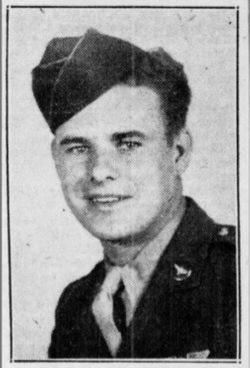
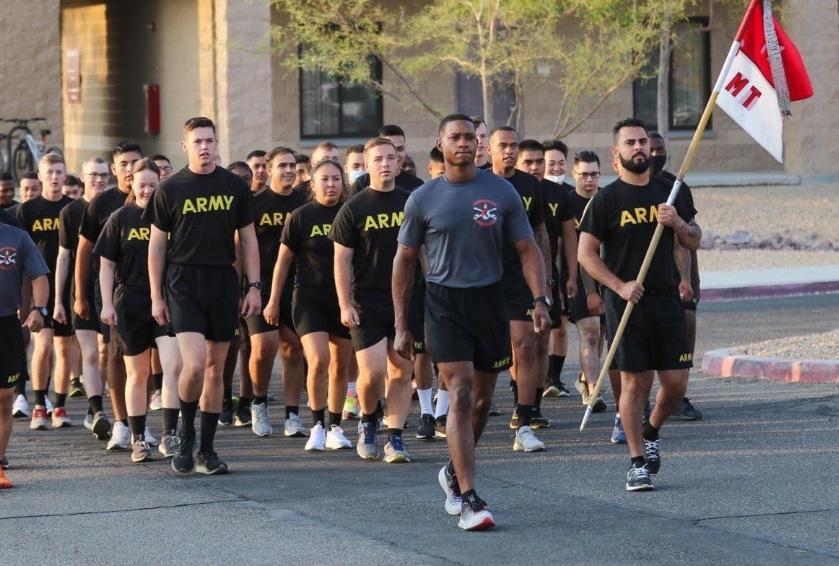
Continued from Page 11
“Figure out who you want to be and what you want to do before you even join the military. That should guide the MOS you choose.”
He also stresses the importance of documenting injuries and getting connected with the VA before separation.
“You’re doing yourself a disservice if you’re not preparing. Even if you stay until retirement, always be ready.”
Bryson’s transition took an entrepreneurial turn when he became general manager of a couture dry cleaner, an opportunity offered by a fellow veteran. But despite the paycheck, he quickly realized it lacked deeper purpose.
“I needed something that felt more aligned with the structure and meaning I had in the military,” he says. That clarity led him to his current role as Facility Super-
visor at the Southern Nevada State Veterans Home in Boulder City, Nevada where he oversees operations in a place devoted to serving those who’ve served.
“It’s meaningful work,” he says. “There’s something powerful about giving back to veterans every day.”
Gerrayl Bryson’s post-military journey is a blueprint for intentional transition fueled by self-awareness, preparation, and a refusal to let setbacks define him.
“I didn’t get to do everything I wanted in uniform,” he says, “but I gave it everything I had. And now I’ve built a life that still reflects that same purpose.”
Whether you’re just entering the military or preparing to hang up the boots, Bryson’s advice rings true: “Certify your skills. Document your journey. Lead with purpose. And always be ready for what’s next.”
Veteran Transition Magazine wishes Gerrayl Bryson all the best in his future endeavors.
by Jerry Whetstone
All too often only the athletic or academic individuals in a graduating class receive ongoing recognition. Yes, those are usually the ones that stand out in a classmate’s mind of having accomplished something worth noting. Many schools have dedicated trophy cases or selected walls to put these individuals’ photos or accomplishments upon. Tecumseh High School in New Carlisle, Ohio has taken this recognition a step further.
Knowing the local high school of any community should be a sense of pride, Principal Aaron Oakes decided to recognize those individuals that have or are making a difference in our lives by making a commitment to the military. In a time where we need support from foreign and domestic threats, these individuals may be putting their lives on the line or in some cases have given their lives to protect us.
cial media, local media and classmate knowledge of this adds to the ongoing list.

Funding such a project would need assistance. Local American Legion #286 and Veterans of Foreign Wars Post #9966 would be the right groups to approach. Matching funds from each other over $2800.00 was given to move the project forward. The largest cost of the project was designing the frame and how to best recognize these branches of service along with what this display is trying to achieve - a sense of pride along with a known commitment to a program, something not everyone has.
The idea was to gather information of who graduated from Tecumseh and entered the military. Of the 818 members of Ohio High Schools, Tecumseh is one of six schools in the Miami Valley area to offer an Air Force Junior Reserve Officer Training Program (AFJROTC). The others being Bellbrook, Fairborn, Springboro, Stebbins, and Wayne High Schools. To gather this, Aaron reached out to Tecumseh Alumni Dave Suther (Class of 72 – retired Navy) to assist. Dave has an extensive collection of yearbooks and is somewhat a history buff on collecting articles of Tecumseh alumni. Upon learning there were many from Tecumseh that have served, how do we honor or recognize them? With today’s technology, why not try a large TV screen! Using email, so-
Individuals wishing to recognize classmates, sons/daughters, brothers/sisters, etc. are able to give photos, branch of service, years of service and any other important information willing to be shared of graduating alumni. The names and photos are gathered by the school and assigned to the JROTC program to update the board on an ongoing basis. The display proudly hangs at the entrance to the auditorium and gymnasium entrance. All attending any event held in the school walk past the display. Military Alumni are on a rotating basis by year of graduation. To date, there are over 100 alumni featured on the board. Future ideas for use of the board include displaying by branch of service, years of graduation, upgrades in rank and other shared ideas. Hoping more schools recognize their military alumni, this is just one project a veteran could become involved with continuing their commitment of pride back to their alma mater.
Interview By Eli Stepp, Veteran Transition Advocate Magazine
Master Sergeant (Ret.) Steven Chris Damron’s story isn’t just one of distinguished military service, it’s a narrative of reinvention, humility, resilience, and faith. From reluctant beginnings in rural Utah to deployments in Iraq and Afghanistan, and eventually becoming a podcast host and aspiring real estate professional, Damron’s journey reflects the evolving identity of today’s transitioning veteran. In this candid interview, he opens up about combat, family, spiritual growth, and finding purpose beyond the uniform.
Growing up in Arizona, California, and later Utah, Chris known professionally as Steven, had little intention of joining the military. “I had zero desire to serve,” he admits. But that changed one night while returning from a Utah Jazz game. “There was this sign in the sky: Be All You Can Be. It hit me hard and I felt something shift.”
In October 2004, he enlisted as an infantryman and shipped off to basic training at Fort Benning, Georgia. What followed was a 20-year career filled with deployments, leadership, and evolution.
Chris’s first deployment to Iraq came in April 2007, with the 9th Infantry Regiment. Initially scheduled for 12 months, the tour was extended to 15. “We were up in Taji, north of Baghdad, doing operations during the surge. It was a gunfight. It was the Wild West,” he recalls.
That same year, he had just married his wife, Jessica. “Our first year of marriage was spent apart while I was deployed.” Their first daughter, Lily, was born just before his second deployment in 2009. “When I came back, I had to re-learn her,” he says. “She wasn’t a baby anymore. She was a toddler I didn’t know.”
Through it all, Jessica remained a constant source of strength. “She’s the hardest worker I know,” Chris says.

“People ask what she does, and I say she’s a domestic engineer. She ‘ran the home’ while I was gone.”
After combat deployments, Damron’s path shifted toward diplomacy. He served four years in Germany with the Defense Threat Reduction Agency, conducting treaty inspections across Europe. “It was the best experience of my career. I never knew something like that existed in the Army.”
Later assignments took him to Alaska, Fort Bragg, and back to Alaska again, where he held key leadership roles including platoon sergeant and first sergeant.
Continued from Page 16
In 2019, he deployed to Afghanistan with the Security Forces Assistance Brigade (SFAB), advising and mentoring Afghan military leadership. “We weren’t just teaching them how to fight. We were helping them build an army with logistics, engineering, and communication. Everything.”
As his career wound down, Chris began to confront the emotional and mental challenges of military life. “Ten years ago, I was at my lowest. I struggled with anxiety, depression. I was even considering suicide,” he shares bravely. “Faith and family brought me back. That’s why I talk about it, because someone needs to hear that they’re not alone.”
That spirit of vulnerability is what inspired his podcast, Sacred Laughter, now with multiple episodes. The show blends humor, heart, and honest conversations. “It’s about honoring the hardships and the healing,” he says. Topics have included generational legacies, military family life, anxiety, and forgiveness. Both of others and oneself.
Despite a storied career, Chris says his transition out of the military lacked clarity. “There are resources like
SFL-TAP, but they’re mostly geared toward younger soldiers doing a few years and getting out. For senior guys like me, the guidance just wasn’t there.”
Instead, he leaned on his faith, mentors, and family to find a new path. With a degree in Small Business and Entrepreneurship, he initially explored consulting. But it wasn’t until his wife casually suggested real estate that something clicked.
“I didn’t get that nagging doubt. I got peace,” he says. Now enrolled in real estate school, he’s preparing to launch his career while on terminal leave. “I want to work with buyers first to walk with people through big decisions. I want to make an impact.”
Today, Chris continues to serve with a Security Forces Assistance Brigade in Washington while preparing for full civilian life. He’s staying connected to the community through his church, media work, and the VFW, and building a business rooted in integrity.
His advice to fellow veterans: “Start building your network now. Reach out to mentors. Be honest with yourself about what you want. And don’t be afraid to ask, God, what’s next?”
Chris Damron may be hanging up the uniform, but his mission is far from over.
Continued on Page 18

Continued from Page 17
Master Sergeant Damron’s story is a powerful reminder that military service is only one chapter in a veteran’s life. What comes after—the healing, the rediscovery, the faith, and the family—is just as meaningful. His journey from reluctant recruit to respected leader, from combat zones to podcast studios, reflects the strength and adaptability of today’s veterans.
As he says: “I won’t miss the circus, but I’ll miss the clowns.”
And perhaps, like many others transitioning out, he’s discovering that the next stage is less about starting over and more about stepping into purpose.
Listen to his podcast
Sacred Laughter Podcast – Available on major platforms.
Veteran Transition Advocate Magazine wishes Steven Damron and his family all the best in the future.


Continued from Page 4
of the Westchester Aircraft Maintenance Association (W.A.M.A.), he continues to influence industry standards and inspire fellow airmen. Dave also founded “Veteran Transition Advocate” Magazine by partnering with established publishing professionals who serve as co-founders and co-publishers.
Most recently, Dave found himself once again called to serve this time by the National Business Aviation Association, which began introducing veterans to new opportunities in business aviation. “I felt excited when I heard the news,” Dave said, “When asked to help, I eagerly took the opportunity to offer my guidance.”
Dave’s story reminds us that expertise matters, but compassion and community make legacies unforgettable.
By Cameron Rolfe

After almost 60 years of air racing, the Reno Air Races, which started in 1964, has moved to Roswell, New Mexico. “RTAA (the Reno-Tahoe Airport Authority’s) concerns around challenging economic conditions, rapid area development, public safety, and the impact on the Reno-Stead Airport and its surrounding areas” were “some of the contributing factors” behind the decision. Make plans now for Sept. 10-14. These are the dates for
NCAR (National Championship Air Races) at Roswell Air Center (ROW) if you plan on attending.
The Hiller Educational and Aviation Museum at San Carlos Airport (SQL) has recently opened an exhibit honoring some of the fastest (and record holding) pilots from those races. The dedication ceremony included many local pilots.
Continued from Page 5
Though Foss’s comedy appears spontaneous, he’s diligent behind the scenes. “I aim to write about ten jokes every day,” he explained. “I often joke that I wasn’t the class clown—I was the one writing material for him.” He credits this disciplined approach to consistently developing relatable material based on daily life, pop culture, and personal experiences.
Foss has performed across countless venues, but his regular appearances aboard cruise ships such as Carnival remain some of his favorites. “I genuinely enjoy cruise shows. The audiences are enthusiastic, and I love the energy,” Foss explained. Though extensive travel can be challenging, Foss notes, “The payoff is worth it—there’s nothing like a live comedy show at sea.”
His wide-ranging experience in aviation—from commer-

cial flights to private jets chartered by Carnival to ensure timely appearances—has given him a keen appreciation for business aviation. “Flying private is fantastic. People often misunderstand it, thinking it’s just for wealthy executives. But many professionals, including entertainers, rely on it to meet demanding schedules. Being able to avoid crowded terminals and fly direct saves enormous stress,” Foss emphasized.
In addition to bringing laughter, Foss is dedicated to giving back. He actively supports WhyHunger, a charity founded by musician Harry Chapin that provides essential funding for food banks nationwide. Foss is currently organizing benefit shows to assist local food banks in New York’s Hudson Valley and beyond. “Comedy gives me a platform to support causes I care deeply about,” Foss noted. “I love making people laugh, but it’s equally important to make a difference.”
Looking ahead, Foss hopes to expand his charitable efforts and perform on additional cruise lines. And after nearly four decades in comedy, his enthusiasm remains strong: “Every show still feels like a new adventure,” he shared. “I never imagined comedy would take me around the globe over a hundred times.”
Tom Foss’s journey is a powerful testament to humor’s ability to transcend barriers, uplift spirits, and offer comfort—even in the most challenging environments. Whether he’s making weary travelers laugh on a cruise ship or providing soldiers a welcome break from war, Foss’s humor is truly universal. As he continues his mission of spreading laughter and goodwill, audiences worldwide remain grateful for the comedian who makes it look so easy.
We were pleased to have had the pleasure of sitting down with Mr. Foss after spectacular show aboard a Carnival cruise ship. Known for his relatable humor, Foss has not only made waves in the entertainment world but also impacted lives through his extensive performances for military audiences worldwide.
Here’s our exclusive Q&A with comedian Tom Foss:
VTAM: Tom, thank you so much for joining us. To begin, tell us how you got your start in comedy?
Tom Foss: It started somewhat by chance. In 1986, I entered an open-mic comedy contest. I won, and that $50 prize was three days’ worth of wages compared to
Continued from Page 20

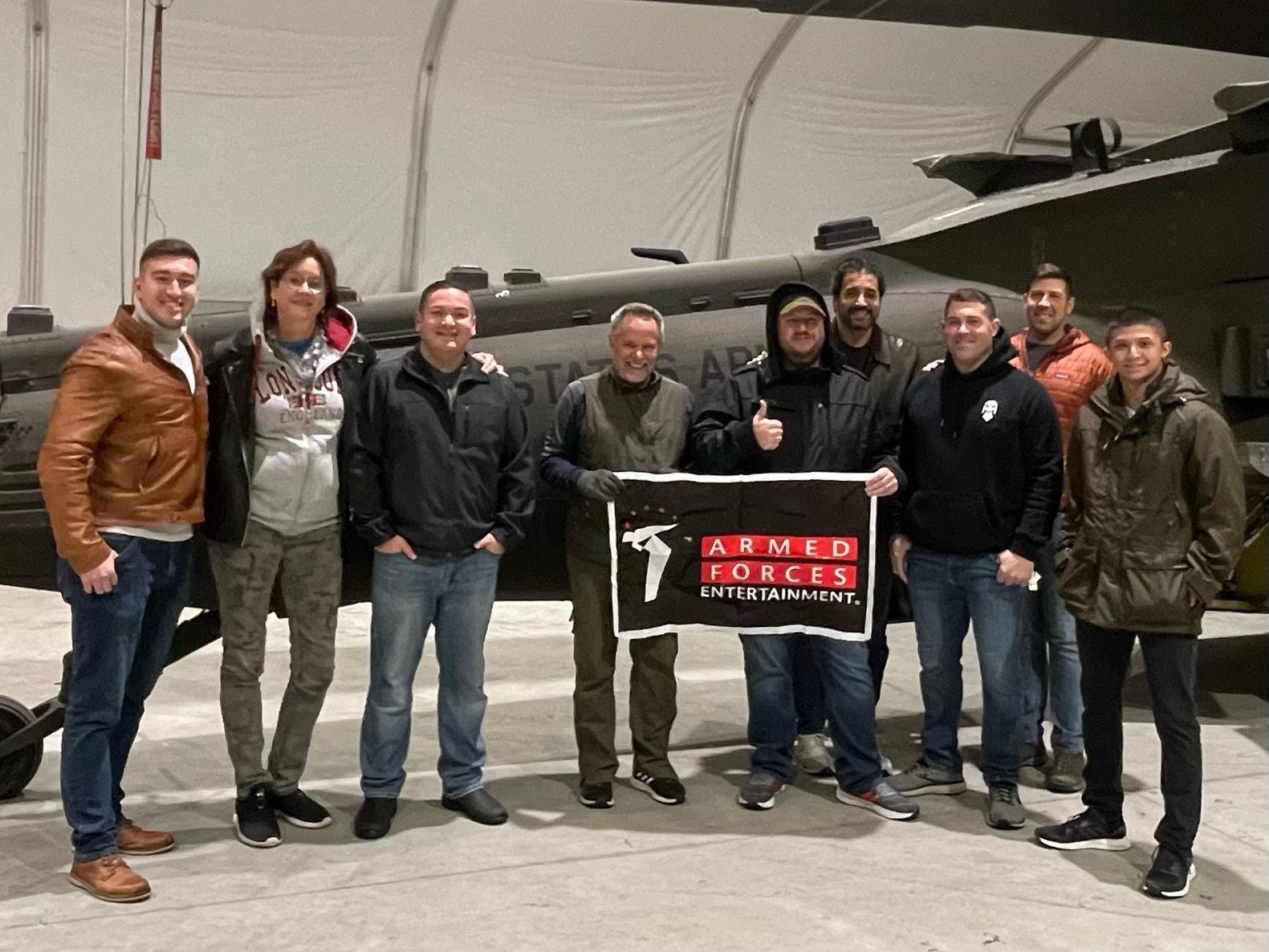
cruise. It’s an enjoyable gig—except for the complex travel schedules. But I love performing aboard ships; the audience energy is fantastic.
my job at Pepsi at the time. From there, opportunities kept presenting themselves—writing for Jay Leno, performing on Broadway, satellite radio, and now, specials with Dry Bar Comedy.
VTAM: You’ve done a remarkable number of shows for the military. Could you share more about those experiences?
Tom Foss: Absolutely. I’ve performed over 500 military shows, including multiple aircraft carrier landings and take-offs aboard carriers like the USS Enterprise and USS Ronald Reagan. Additionally, I’ve toured Iraq five times and Afghanistan six times since 2005. I’m also heading to Poland soon for another military tour.
VTAM: Where do you draw inspiration for your material?
Tom Foss: Early on, I realized people weren’t interested in my personal opinions, so I wrote jokes based on pop culture, sports, and the news. Now, my humor is much more personal. Observations from daily life, interactions during travel, and conversations with strangers—those are my richest sources. I write constantly, aiming for about ten jokes nearly every day.
VTAM: You mentioned performing aboard cruise ships. How does that schedule typically work?
Tom Foss: Usually, I join the ship midway through one cruise and stay on through the first half of the next
VTAM: Ever had to deal with hecklers? How do you handle them?
Tom Foss: Thankfully, they’re rare. But when they do happen, I gauge whether the comments are playful or negative. If they’re playful, I include them lightly. Negative hecklers get swiftly and humorously addressed. It’s important the entire audience remains supportive, and I make sure not to humiliate anyone publicly—after all, these people still have days left on their cruise!
VTAM: What has been your most meaningful feedback from troops after your military shows?
Tom Foss: The greatest compliment is when a service member says, “For an hour, I forgot where I was.” That’s profoundly rewarding. Parents sometimes email, mentioning how their deployed kids were so uplifted by the show. Knowing that I could bring a moment of relief to those serving overseas is immensely gratifying.
VTAM: You’ve flown privately occasionally due to your schedule. What’s your view on business aviation?
Tom Foss: I’m definitely an advocate. Charter flights, especially when traveling for Carnival or military commitments, have been wonderful. Driving right up to the plane without connection stress—it’s a huge relief. Contrary to negative press, business aviation is not just for the elite; many professionals rely on it out of necessity due to their demanding schedules.
Continued from Page 21
VTAM: You’re also an ambassador for the charity WhyHunger. Can you tell us more about that?
Tom Foss: Yes, I’m honored to support WhyHunger, founded by musician Harry Chapin. The organization assists food banks across America, ensuring they have the resources to continue feeding communities. I’m currently planning benefit shows to support my local Hudson Valley food banks and beyond. Comedy gives me the platform to amplify such meaningful causes.
VTAM: After nearly four decades in comedy, what’s next for you?
Tom Foss: My goal is to expand the charitable work, particularly with hunger initiatives, and I’d like to branch out to more cruise lines. I’m also open to trying new things—even comedy at 30,000 feet!
VTAM: Lastly, any advice for aspiring comedians?
Tom Foss: Try open mic at least once. It’s a thrill like no other, and you just might get hooked for life. Comedy’s about connection, and if you can bring a little joy, it makes it all worthwhile.
VTAM: Tom, thank you for your time and for all the joy and relief you provide through your comedy.
Tom Foss: It’s been my pleasure. Thanks for having me.
Veteran Transition Advocate Magazine wishes Tom Foss all the best in the future.
Comedian Tom Foss continues to travel, perform, and inspire laughter globally. His dedication to entertaining troops and supporting charitable causes showcases the profound impact humor can have beyond the stage.
For more information, visit Tom Foss’s shows and books available on Amazon and Barnes & Noble.


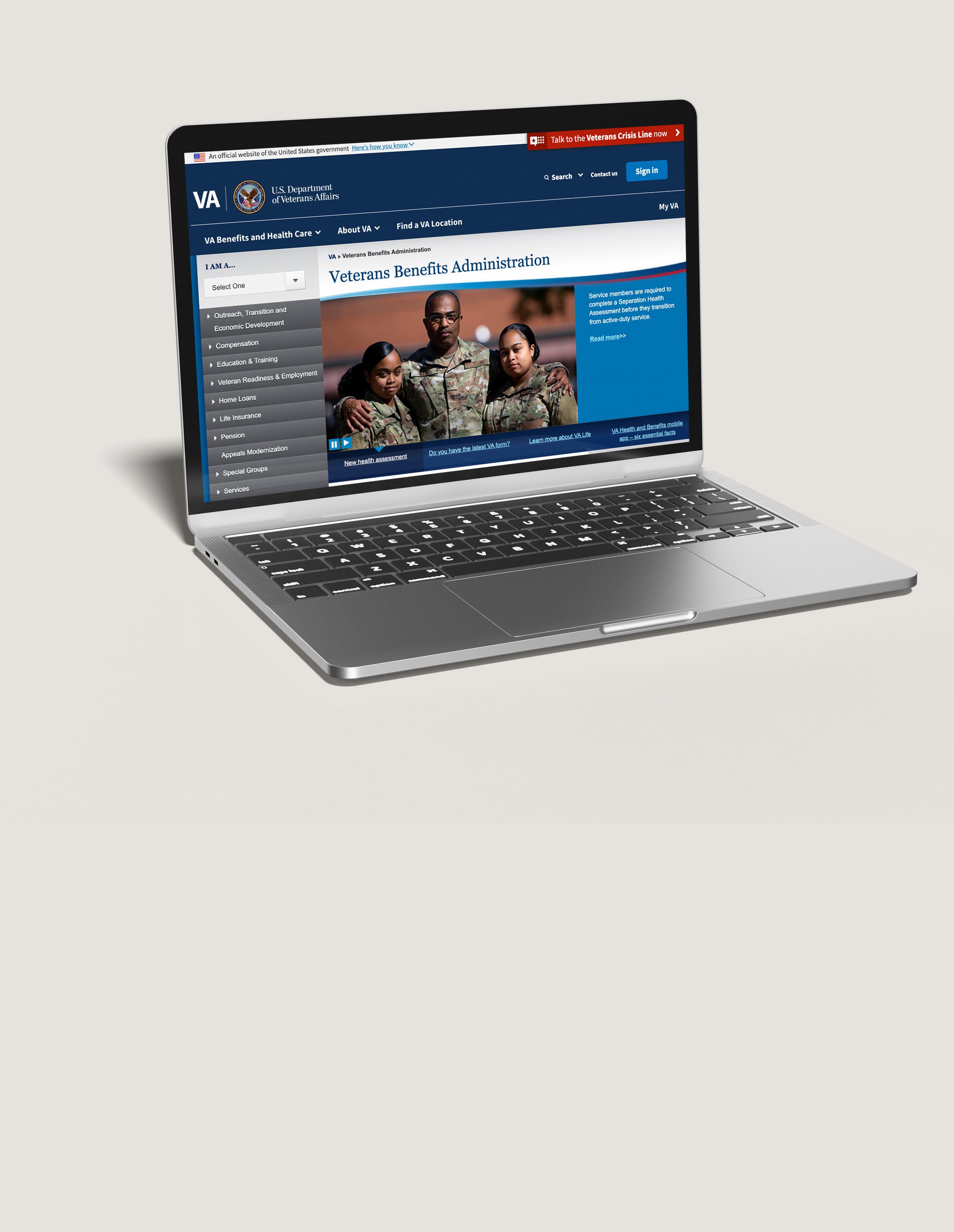

The inaugural NBAA-BACE Military Connect is designed exclusively for transitioning military personnel ready to take the next step. This full-day experience, hosted on Wednesday, Oct. 15, is free for all active duty military personnel and offers:
» Education sessions on transitioning to civilian aviation
» Networking opportunities at the NBAA booth
» Career exploration at the Career Zone
» Access to the NBAA-BACE exhibit hall to connect with top employers
» A closing transition support session
